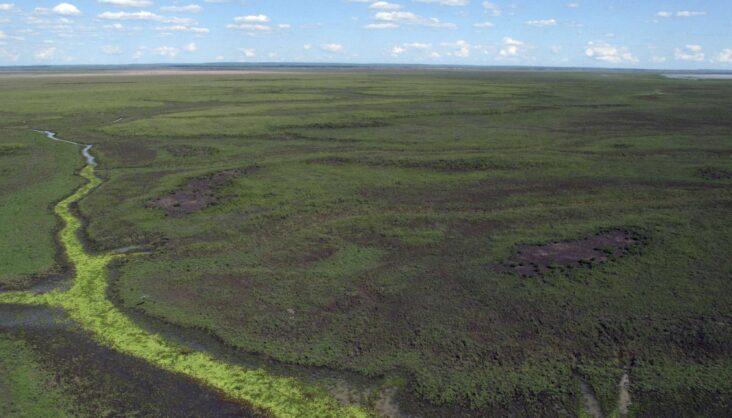Africa-Press – Mauritius. The Climate Ambition Summit this month marks the 5th anniversary of the Paris Agreement. World leaders meeting online are being asked to deliver stronger, more ambitious commitments that will spark action to halt the unfolding climate crisis.
Restoring degraded land part of plan to meet objective Land is the basis of our food, feed, and fibre systems. It is home to the biodiversity that supports these systems.
It is a provider of ecosystem services such as clean water and climate regulation. Its degradation releases gigatonnes of warming gases in the atmosphere and has negatively impacted 3.2 billion people globally.
Actions to restore some of the degraded 2 billion hectares of land could yield and spread benefits, from food security to livelihoods to peace and security among rural and urban populations, across developed and developing countries.
What’s possible when everyone works together Amid a global pandemic that still has months to run, societies have shown what they can achieve if they work together, if they listen to science, if they adjust their actions.
The post-pandemic era is about a resilient future for resilient societies. This can only be done through a recovery that contributes to climate action, reverses the loss of nature and biodiversity, minimises the risk of future pandemics and spreads the benefits from recovery more equally.
This is where the role of land restoration lies. A recent report from the PBL Netherlands Environmental Assessment Agency shows that huge commitments have been made to reverse this problem.
More than 100 countries have made commitments that equal the restoration of almost one billion hectares of land – an area almost the size of China. Restoring land is not just about food
Degraded land becomes unproductive and creates the need to clear new lands. This vicious downward spiral comes at the expense of ecosystems that sequester carbon and the biodiversity that lives there.
More cleared land means more greenhouse gas emissions and fewer wild spaces that create a buffer against diseases that cross from animals to humans, such as COVID-19.
Of the one billion hectares covered by commitments, 250 million can be restored to produce more food. This would reduce the need for new productive land. But it isn’t just about land for food.
Restoring forests, dry and wet lands, and other ecosystems will mitigate climate change and restore nature’s defences against weather extremes, such as heavy rainfall and coastal surges.
The restoration of 350 million hectares of degraded ecosystems between now and 2030 could return $9trn in ecosystem services and remove up to 26 gigatonnes of greenhouse gases from the atmosphere.
This is almost half of what the world emitted in 2019. These figures, bear in mind, cover only around one third of the agreed restoration commitments.
Some commitments are gathering pace The Great Green Wall Initiative aims to restore 100 million hectares across the Sahel in an 8,000 km-long strip. That alone is expected to decrease 250 million tonnes of carbon.
This will not only help to reduce climate change but also create ten million rural jobs along the way, help communities to be more resilient and reduce forced migration.
We have a major opportunity to move on restoration commitments. Countries can accelerate action during the United Nations Decade on Ecosystem Restoration, which starts next year.
They can invest in land restoration in their pandemic recovery packages. They can increase the land-based mitigation commitments under the Paris Agreement, which is estimated at about 220 million hectares.
The PBL report shows that such actions would be particularly relevant for North America, Europe, Russia, Central Asia, the Middle East and North Africa.
Over half of the restoration commitments so far are in Sub-Saharan Africa. Much of the rest are in Central and South America, China and South Asia. Bottom line
Restoring land is one of a few investments that produces immediate effects: slows climate change, protects against pandemics and boosts food security.
Nature-based solutions could provide up to one third of the climate solution by 2030, protect and restore biodiversity, increase agricultural productivity, provide jobs, boost livelihoods and reduce poverty.
For More News And Analysis About Mauritius Follow Africa-Press







